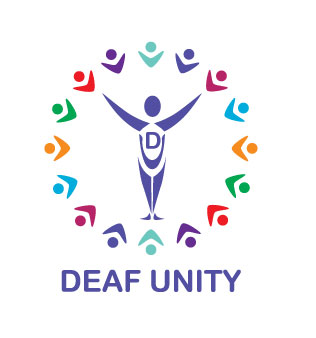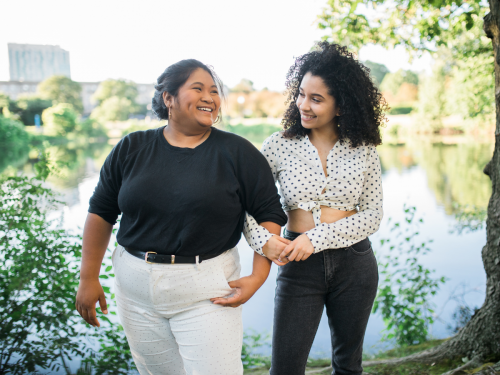
2020 has been a tough year for everyone. But for deaf people, the introduction of face-masks and so much of life moving online, has meant that communication barriers have dramatically increased.
As we have adapted to new ways of connecting, it has become clear that communication with the hearing world is a two-way process, and that there are some ways the hearing community could help reduce deaf anxiety.
Need some ideas? Here’s 10 things hearing people could do to help deaf people this year.
-
Get our attention
The hearing world can be really noisy, especially if you’re a deaf person who uses hearing devices like hearing aids or cochlear implants, where filtering lots of different sounds around you can be tricky.
If you want to speak to a deaf person, make sure to get their attention first with a wave or gentle tap (social distancing withstanding), so they can face you and filter for your voice.

-
Wear transparent face masks
Whether communicating through speech or BSL, it is vital that deaf people are able to see the faces of everyone speaking, to help them better lipread or read facial cues. Now wearing face-masks is the norm, a large portion of the face is covered.
Over 70% of all communication is non-verbal – so if a deaf person can’t see your face and can’t hear your voice, communication is virtually impossible.
Transparent masks give deaf people a chance to pick up on the 70% non-verbal cues, which can be enough to follow the conversation.
-
Speak clearly
‘It is not about volume for those of us who wear hearing aids. It’s all about clarity.’ (Karen D Albury, Facebook)
Many deaf and hard of hearing people wear hearing aids or have cochlear implants/BAHAs, but these devices only serve to make sounds louder.
Some deaf people lipread, or use devices to help them pair the lip-pattern they see.
One way to help deaf people communicate better? Speak clearly. And don’t shout! Shouting distorts mouth shapes and makes it much harder for deaf people to follow.
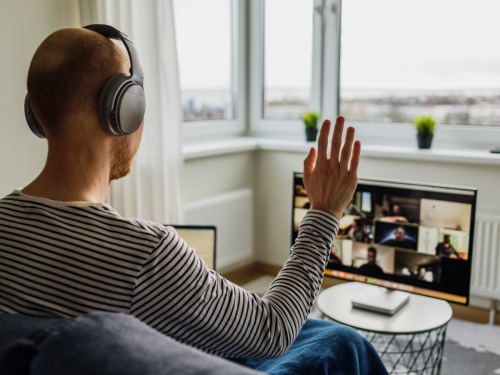
-
Repeat, repeat, repeat
Lipreading is an art, not a science – deaf people are often going to miss parts of conversation.
If they do, just repeat what you’ve said at the same speed and same volume. It might take a few attempts, but be patient. This is even more important with digital communication, where connection issues can make communication even harder.
And, please don’t dismiss us with, ‘Oh, never mind.’ We will get there.
-
Use positive language around deafness
‘Delete ‘hearing impaired’ from your vocabulary.’ (Maris, Twitter)
Deaf and hard of hearing are (generally) the accepted terms to represent the deaf community.
The term ‘hearing impaired’ implies that deaf people are, in a way, less than hearing people. So this tends to have negative connotations in the deaf community.
If you are in any doubt, just ask which terminology the person prefers to use.

-
Smile!
Quite often, the response to, “I’m deaf” is, “I’m sorry” with a sympathetic head tilt, and pity. But it’s important to remember there’s nothing to be sorry about.
Deaf people are okay, and we just need your support to be able to interact. A smile and an offer to help is much appreciated.
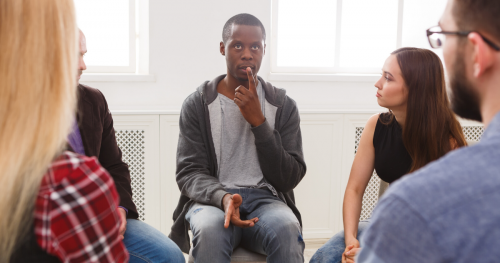
-
Learn British Sign Language
Although not every deaf or hard or hearing person communicates using sign language, those of us who do, have to work harder to communicate in the hearing world.
Learning some basic, conversational BSL would help deaf people communicate more easily, and reduce the social isolation. It’s a great skill to have, and would mean so much to every deaf person you communicate with.
Why not sign up to one of Deaf Unity’s BSL courses? From Introduction to BSL, to Level 1 and 2 – find out about our BSL courses here.
-
Use captions
In an age where everything is online, from plays and films, to meetings and zoom parties, captions aren’t just an added extra. For deaf people, they are a necessity.
That’s why it’s vital we ensure all online media is captioned before it is posted. It can make deaf people feel like a burden or an inconvenience if they have to ask for captions or a transcript. (Plus, it’s likely to get more views with captions, as lots of hearing people watch without sound, too, so everyone’s a winner!)
-
Text rather than phone
For most deaf people, our ears are not reliable, but our eyes are. For some deaf people, (those who are profoundly deaf, CI wearers or those with hearing aid moulds) using a phone is incredibly difficult or nigh-on impossible.
Check with the person first, but a text or email is likely to be an easier way to communicate, for you and us.
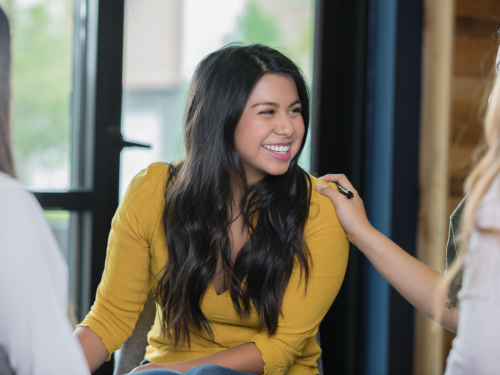
-
Ask deaf people what they need
‘Lived experience is so important.’ James Watson-O’Neil (Twitter)
Deaf people live the deaf experience every day. If there’s something you want to know, just ask. The deaf community would rather answer questions than have to correct misconceptions, and we’re more than happy to explain what we need.
3 takeaways from this article:
- With communication barriers increasing due to the pandemic, there are some easy things hearing people can do to help deaf people this year
- These include: wearing transparent masks, speaking clearly, using captions and being patient
- Most importantly, ask the deaf community what support they need
Looking for more support? We’ve made it our mission to improve the lives of deaf people everywhere. Check out Deaf Unity’s projects to find out what we can do for you. If you’d like to get in touch, contact us here.
This article was written by Evie, a full time primary teacher, full time autism mum and full time campaigner for inclusion and equality. Evie has a passion for all things literary and never goes anywhere without a book.

